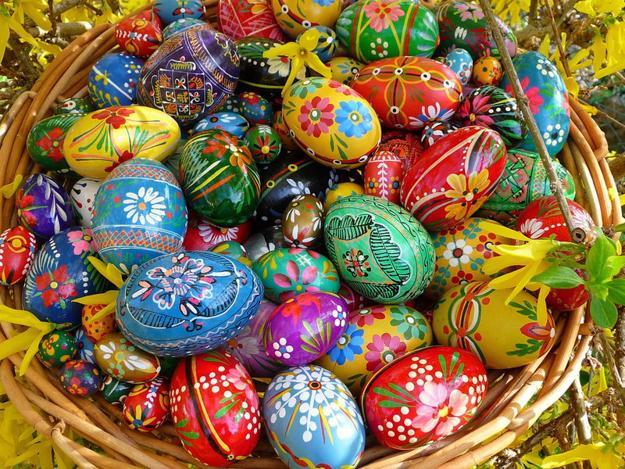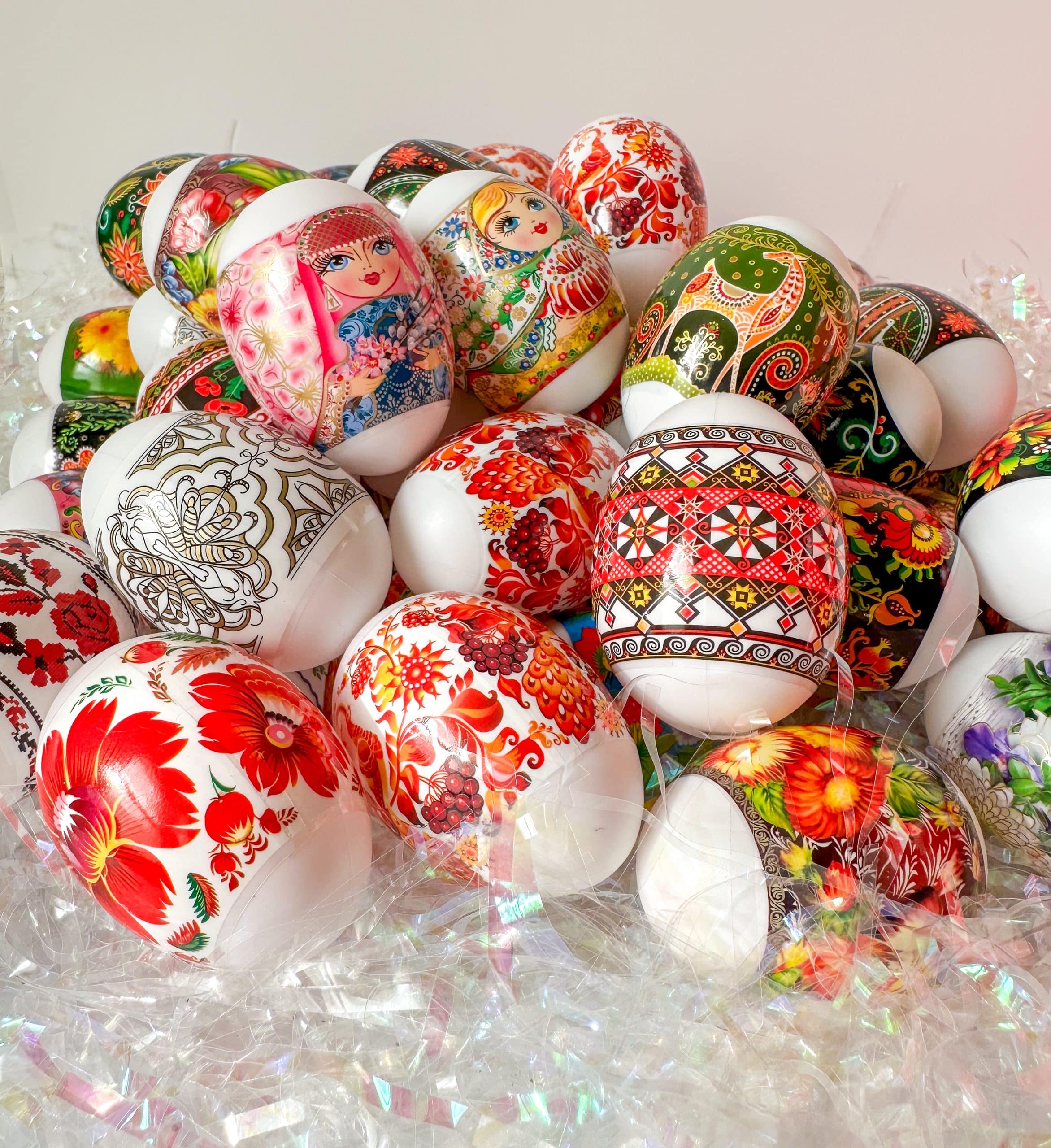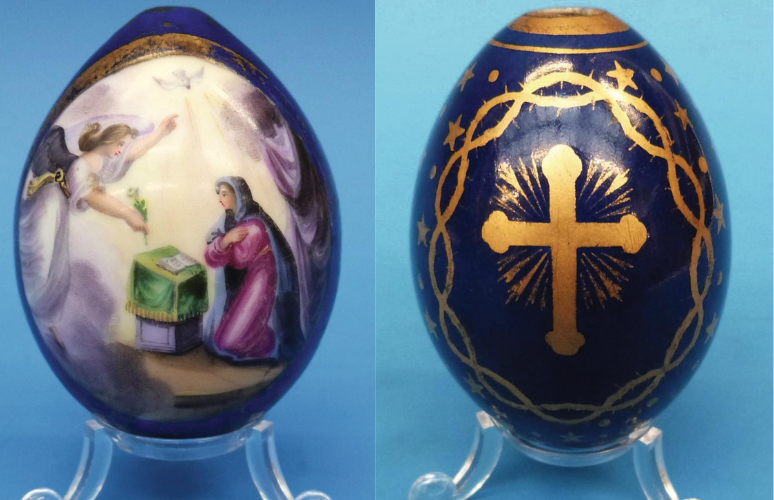When I first stumbled upon the enchanting world of decorated eggs, or “pysanka,” it felt as if I was uncovering a hidden treasure. These meticulously painted creations are not just beautiful; they are steeped in culture and history, especially in Russia and Ukraine. In this article, I’ll take you on a journey through the fascinating tradition of Russian decorated eggs, sharing my experiences, techniques, and the joy of creating these unique masterpieces.
The Rich History of Russian Decorated Eggs
Decorated eggs are much more than mere ornaments. They are steeped in tradition, symbolizing rebirth and the arrival of spring. The use of eggs is prevalent in many cultures, but the Russian tradition stands out for its intricate designs and deep-rooted customs.
Origins of the Tradition
The practice of decorating eggs can be traced back to ancient Slavic rituals associated with fertility and renewal. Historically, eggs were seen as a symbol of life, and their decoration became an integral part of Easter celebrations.
The Pysanka Art Form
One of the most prominent styles of decorated eggs is the “pysanka,” which originated from Ukraine but is also embraced in Russia. The term comes from the Ukrainian verb “pysaty,” which means “to write,” referring to the intricate designs that are drawn onto the eggshell using wax and dye.
Materials Needed for Decorating Eggs
Before you embark on your egg-decorating adventure, it’s important to gather the right materials. Here’s a comprehensive list.

Essential Supplies
- Raw or blown eggs (preferably white or light-colored)
- Beeswax or paraffin for creating designs
- Stylus (kistka) for applying wax
- Dyes (natural or commercial)
- Vinegar and water for preparing dye
- Brushes for detailing
- Paper towels for cleaning
- Gloves to protect your hands
Choosing the Right Eggs
When selecting eggs for decoration, consider using white or light-colored varieties. I personally found that white chicken eggs offer the best canvas for vibrant designs. Additionally, using blown eggs can preserve your art for years to come.

Step-by-Step Guide to Decorating Eggs
Now that we have our materials ready, let’s dive into the decorating process, which I’ve broken down into simple steps.
Preparing the Eggs
First, you need to prepare your eggs. If you choose to use raw eggs, you will need to blow them out by making small holes at each end and gently blowing the contents out. Alternatively, you could use boiled eggs but bear in mind they will have a shorter shelf life.

Applying the Design
1. **Sketch Your Design:** Start by sketching your design on paper. This helps in visualizing how the final product will look.
2. **Melt the Wax:** Using a kistka, gently melt beeswax over a heat source.
3. **Draw the Design:** Dip the kistka into the melted wax and draw your design on the eggshell. The wax will resist dye, so plan your colors accordingly. I often start with the lighter colors and layer darker ones over them.
Coloring Your Egg
Once your design is complete, it’s time to dye the egg:
- Prepare your dye solution by mixing dye with vinegar and water.
- Dip your wax-covered egg into the dye, following the instructions for how long to leave it in for the desired color.
- Remove the egg and dry it with a paper towel.
- Repeat this process for each color, ensuring to apply more wax over areas you want to remain that color.

Finishing Touches
After you are satisfied with the colors, it’s time to remove the wax. Gently heat the egg over a candle flame, and the wax will melt away, revealing your beautiful design. Finally, you can coat your decorated egg with a clear lacquer to add shine and protect it.
Comparing Techniques: Pysanky vs. Other Egg Decorating Styles
| Technique | Pysanky | Ukrainian Wax Resist | Western Decorated Eggs |
|---|---|---|---|
| Origin | Ukraine, Russia | Ukraine | Various Western Cultures |
| Design Process | Wax resist | Wax resist | Painting, decoupage |
| Symbolism | Fertility, renewal | Cultural heritage | Seasonal decoration |
| Technique Complexity | Advanced | Intermediate | Simple |

Celebrating with Decorated Eggs
In Russia, decorated eggs play a significant role during the Easter season. Families often gather to share their artistic creations and partake in traditional egg rolling games. These gatherings are filled with joy and laughter, and I can’t help but reminisce about the excitement of revealing my latest work among friends and family.
Personal Experience: My First Egg Decorating Session
The first time I decorated an egg, I was nervous yet excited. Armed with a kistka and a vision of what I wanted to create, I took my time. The process was almost meditative; each stroke of wax felt like a brush with history. When I finally dipped my egg into the dye and revealed the design, I was filled with pride and joy. It was a moment I will cherish forever, and it sparked a newfound passion for this art form.

Pros and Cons of Decorated Eggs as a Craft
Pros
- Enhances creativity and artistic skills.
- Connects you with cultural traditions.
- Provides a rewarding and engaging activity for families.
- Creates beautiful, personalized gifts for loved ones.
Cons
- Can be time-consuming, especially for intricate designs.
- Requires specialized materials that may not be easily accessible.
- Mistakes can lead to unsatisfactory results.

FAQs about Russian Decorated Eggs
What is the significance of decorated eggs in Russian culture?
Decorated eggs symbolize renewal and rebirth, often associated with the spring season and Easter celebrations. They showcase intricate designs that reflect cultural heritage and artistic expression.
Can I use different types of eggs for decorating?
Yes, you can use various types of eggs, but white or light-colored eggs are preferable as they provide a better backdrop for bright colors and intricate designs.
How do I preserve my decorated eggs?
To preserve your decorated eggs, you can apply a thin coat of clear lacquer after removing the wax, which adds a protective shine and prevents damage.
Are there any tips for beginners in egg decorating?
Start with simple designs and gradually progress to more intricate patterns as you gain confidence. Practice makes perfect! Don’t be afraid to experiment with colors and techniques.
Conclusion: Embrace the Art of Decorated Eggs
Decorating eggs is not just a craft; it’s a heartfelt expression of tradition, creativity, and community. Whether you are looking to decorate eggs for a special occasion or simply enjoy a rewarding project, this art form offers endless possibilities. As you embark on your own journey of creating decorated eggs, remember that each stroke and color choice tells a unique story, much like your own personal journey.
So gather your materials, unleash your creativity, and dive into the beautiful tradition of Russian decorated eggs. You might just find a new passion that connects you to history and culture, and most importantly, brings joy to you and those around you.